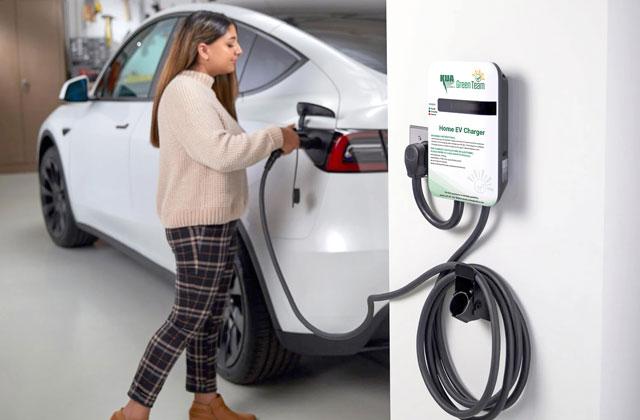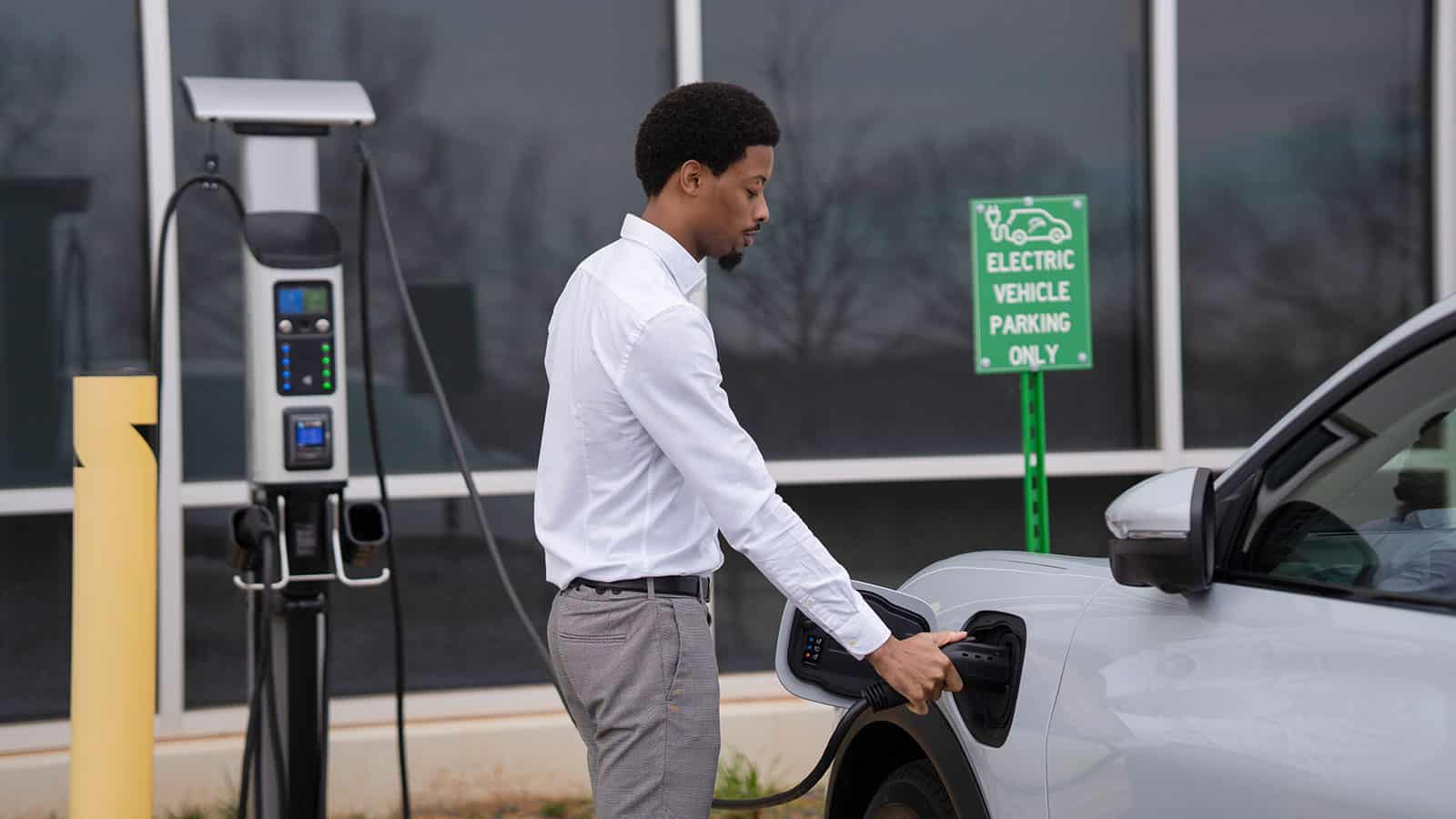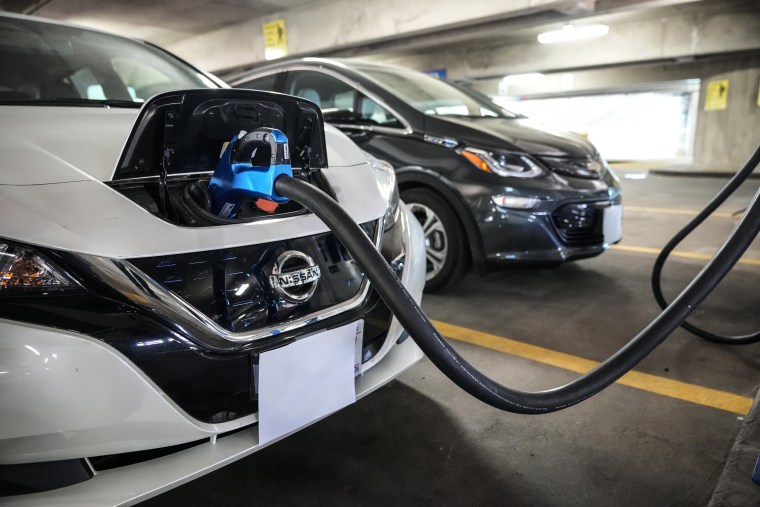What’s Driving the Growth of EV Infrastructure? Buy EV Charging news for Key Updates
What’s Driving the Growth of EV Infrastructure? Buy EV Charging news for Key Updates
Blog Article
New Dope in EV Charging: How the Industry Is Developing to Meet Demand
As the electric vehicle (EV) market remains to expand, the billing framework is undergoing substantial changes to attend to the surging need. Key advancements in ultra-fast charging innovations, combined with smart grid integration, are improving the landscape. In addition, advancements in battery modern technology assurance boosted effectiveness and sustainability. The pursuit of international charging criteria remains a critical aspect in enabling seamless customer experiences and widespread fostering. The implications of these improvements raise crucial questions regarding the future of EV charging and its function in the broader power ecosystem.
Development of Charging Facilities
The quick expansion of electric automobile (EV) billing infrastructure is an important part in facilitating the extensive adoption of electric wheelchair. As federal governments, exclusive companies, and consumers progressively acknowledge the value of lowering carbon emissions, investments in charging networks have surged. This facilities development is necessary to reduce range stress and anxiety, guaranteeing that EV individuals have practical accessibility to billing terminals.
Substantial innovations in billing terminal modern technology and deployment strategies have emerged. Urban locations are seeing a proliferation of public billing terminals, while country areas are slowly being incorporated right into the billing network. Furthermore, partnerships between automobile producers and charging carriers are becoming more common, promoting the facility of detailed networks that enhance user experience and accessibility.
In addition, the assimilation of sustainable energy resources right into charging terminals is acquiring energy, advertising sustainability in the EV ecosystem. This change not just supports ecological goals yet also straightens with the increasing need for eco-friendly power options among consumers.
Ultra-Fast Charging Technologies
Ultra-fast billing innovations stand for a considerable jump forward in the EV billing landscape, making it possible for electric automobiles to reenergize in a fraction of the time compared to conventional charging techniques. These advancements commonly deliver power levels surpassing 150 kW, with some systems getting to up to 350 kW or more, significantly lowering billing times to as little as 15-30 mins for a considerable cost.
Key making it possible for modern technologies consist of innovations in battery chemistry, power electronic devices, and thermal administration systems. High-capacity batteries with boosted thermal stability enable for faster billing without overheating. EV Charging news. Additionally, growths in billing framework, such as liquid-cooled cable televisions and modular charging terminals, facilitate reliable power transfer, enhancing the overall individual experience
Major vehicle suppliers and modern technology companies are actively purchasing ultra-fast charging networks, acknowledging the essential role they play in getting rid of array anxiety and increasing the fostering of electrical vehicles. As these technologies become more widely readily available, the EV market is anticipated to witness substantial development, making electrical flexibility an extra eye-catching choice for consumers. In general, ultra-fast charging technologies are pivotal in shaping the future of lasting transport, leading the way for a more reliable and substantial charging community.
Smart Grid Integration

With demand response techniques, smart grid systems can adjust charging routines based upon grid conditions and electrical energy prices. Throughout periods of high need, billing can be delayed to off-peak hours, resulting in lower expenses for customers and lowered stress on the grid. Additionally, vehicle-to-grid (V2G) technologies enable EVs to discharge energy back into the grid, boosting and providing secondary services grid security.
Assimilation with renewable resource sources better enhances the sustainability of EV charging. By aligning billing tasks with periods of high solar or wind generation, clever grids promote a greener charging facilities. Ultimately, clever grid assimilation not only sustains the expanding demand for EVs however also adds to a more sustainable and durable energy future, placing the sector for long-term success.
Battery Technologies
Amidst the rapid development of electric vehicles (EVs), battery innovations stand at the center, driving developments in efficiency, sustainability, and performance. As the need for EVs surges, researchers and producers are concentrating on boosting battery technologies to resolve difficulties such as range stress and anxiety and billing times.
Lithium-ion batteries stay the most extensively used innovation, yet new products and chemistries are emerging to boost energy thickness and longevity. Solid-state batteries, for circumstances, guarantee better power storage capability and improved security by replacing liquid electrolytes with strong ones. This change could considerably decrease the threat of fire and enhance the life-span of batteries.
Additionally, developments in battery reusing procedures are critical for sustainability. Companies are establishing techniques to recuperate beneficial products like lithium, cobalt, and nickel from utilized batteries, promoting a circular economic situation and decreasing environmental effect.

Worldwide Billing Requirements

Initiatives are underway to develop worldwide charging standards that help with compatibility amongst various EV versions and charging terminals. Organizations such as the International Electrotechnical Payment (IEC) and the Society of Automotive Engineers (SAE) are working collaboratively with automobile suppliers and energy carriers to create detailed standards. EV Charging news. These criteria purpose to improve the charging process, reduce the demand for several adapters, and improve customer experience
In addition, standardization can more info here dramatically boost the growth of the billing network, as it motivates investment by making facilities growth more foreseeable and efficient. As the EV market develops, a unified technique to charging requirements will certainly be vital for guaranteeing that consumers can charge their vehicles conveniently and accurately, thus supporting the broader shift to lasting transport.
Conclusion
The electric car charging sector is undertaking significant makeover to deal with the surging need for sustainable transport. Advancements accountable infrastructure, ultra-fast technologies, clever grid integration, and innovative battery solutions are crucial in improving user experience and functional performance. In addition, the search of worldwide billing requirements is vital for making sure interoperability throughout various areas and systems. Collectively, these growths place the market to support a broader adoption of electric vehicles, ultimately adding to a much more lasting future.
Urban locations are seeing a spreading of public charging terminals, while rural regions are gradually being incorporated into the charging network. In addition, advancements in billing facilities, such as liquid-cooled cable televisions and modular charging stations, help with efficient power transfer, boosting the overall user experience.
Overall, ultra-fast charging technologies are essential in forming the future of lasting transportation, paving the way for an extra efficient webpage and considerable charging ecological community. - EV Charging news
By lining up billing tasks with periods of high solar or wind generation, clever grids advertise a greener billing facilities.Initiatives are underway to establish worldwide billing criteria that facilitate compatibility amongst numerous EV models and billing stations.
Report this page